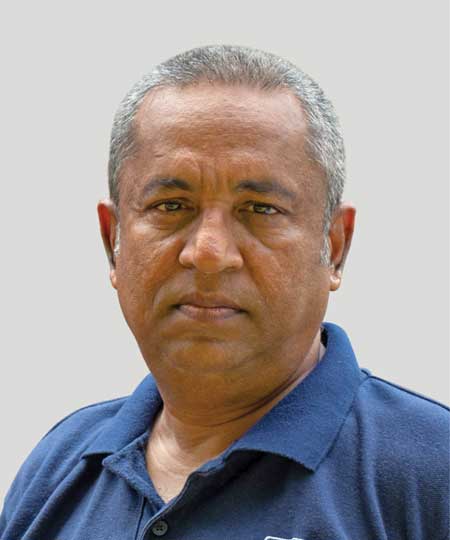CORPORATE PROFILE
JOHN KEELLS GROUP

Head of CSR – John Keells Group
Q: The Cinnamon Rainforest Restoration Project is the John Keells Group’s first major venture into forestry... What prompted this?
A: Understanding the adverse effects of rapid development on the environment, the John Keells Group is committed to reducing the negative effects of our operations on the environment, and advancing the cause of environmental preservation and sustainability. It is also one of the focus areas of our CSR entity, John Keells Foundation (JKF).
Sri Lanka is home to diverse forest ecosystems. Yet, according to Global Forest Watch, the island has lost 10.5 kilo hectares (kha) of humid primary forest between 2002 to 2021. We recognised the need for natural forest regrowth, which is increasingly acknowledged as a viable climate change solution globally.
Q: What is the main objective of the Cinnamon Rainforest Restoration Project – and who are its stakeholders?
A: The main objective is to restore a degraded 59 acre plot in Suduwelipotha near the Sinharaja Forest Reserve over three years, using scientific restoration guidelines, after which nature will take its course. The project involves planting trees native to the area and clearing out invasive plant species.
The main stakeholders are the Forest Department Sri Lanka; implementing partner Ruk Rakaganno; primary funder JKF; Cinnamon Hotels & Resorts (CHR), which provides technical support including nursery establishment, planting regimes, post-care and monitoring; and the local community. Deutsche Bank’s Colombo Branch is also partnering JKF in funding the reforestation of nine acres of the site.
“Several local community members were employed by CHR to engage directly in the project, providing livelihoods amidst the COVID-19 pandemic and economic crisis
Q: How have your employees engaged in this project?
A: Since the launch of the project in June 2021, JKF has organised over 10 volunteer interventions, in which our colleagues were given the opportunity to visit the site, and actively participate in planting saplings and clearing out invasive plants. These sessions also serve as an experiential learning for our people to better understand reforestation, conservation and the area’s biodiversity.
Q: What about the community and your customers? How can they be involved?
A: Several local community members were employed by CHR to engage directly in the project, providing livelihoods amidst the COVID-19 pandemic and economic crisis. Local families also grow saplings of native plants at home, which are subsequently bought by the project to plant at the site.
The knowledge gained by the participating residents will be invaluable in furthering ownership and future reforestation initiatives.
While a ‘green fund’ has been set up to enable guests of CHR to make financial contributions to this project, they’re also invited to visit the site and help in the conservation efforts, and are provided project progress updates when involved.
Q: How will the project uplift the flora and fauna in the rainforest?
A: We have exceeded the contractual target of planting 13,000 trees, having already put in place over 15,000 plants representing 65 diverse Wet Zone indigenous forest species.
Pioneer plants introduced to the site are increasing the survival percentage of forest trees by providing shade and nutrients. These plants are exclusively native and endangered species confined to the lowland Wet Zone of Sri Lanka.
The introduction of dead logs, ponds and rock caves as part of the project plan will help to establish wildlife habitats to restore food webs. Restored land will attract wildlife from the surrounding landscape that is challenged by monocultures such as tea and pine plantations. It will provide a safe haven for common and endangered species to thrive.
On a wider scale, the rainforest sequesters carbon dioxide by converting it into biomass, acting as a buffer to combat global warming.
This slideshow requires JavaScript.
Q: What will the handing over of the project to nature look like?
A: Once the planting and nurturing is completed by end of the second year, the intervention will be minimal such as removing invasive plants and allowing nature to take over.
The project plan is to maintain the land for a minimum of three years during which scientific monitoring will demonstrate the project’s ecological succession. While custody of the land lies with the Forest Department, the local community has a strong role to play in its continuous protection and improvement.
An initial burst of planting has already fuelled natural progression; and soon, the land will convert into a mini-rainforest ecosystem with the help of ideal weather, attracting a myriad of species that will move in and make the site their own.
Ecologist & Project Champion – CinnamonRainforest Restoration Project
Vice President – Nature Trails,Cinnamon Hotels & Resorts
Telephone 2306000 | Email jkh@keells.com | Website www.keells.com







